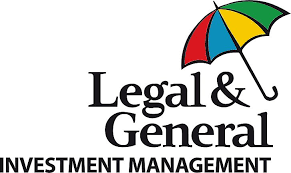Why are some areas of the credit market holding up better than others? And why do we believe there will there be a higher percentage of fallen angels as we head into next year?
There’s a bit of a tug of war going on in markets right now. On the one hand, talk of a US soft landing, rather than a full-blown recession, seems to be gaining the upper hand. By contrast, the most recent Senior Loan Officers (SLO)[1] survey displayed clear signs that US banks continued to restrict loans to consumers, corporates and commercial real estate borrowers alike. While we believe tighter bank lending will ultimately choke off economic activity, neither our credit nor equity analysts are seeing much evidence of an immediate credit squeeze. So, what’s going on? Does this constitute a lagged effect or something more fundamental?
Resilience still in evidence for now…
The fact of the matter is that S&P 500 headline earnings are holding up better than analysts expected this year, albeit on account of a small number of technology companies benefiting from a surge in artificial intelligence investment. Strong wage growth and tight conditions in the labour market also mean that the spending power of the US consumer is proving more resilient than first thought. Dig deeper though, and from the extent of ‘trading down’ in the retail sector, it becomes all too evident that consumers are spending their dollars more wisely.
On the flip side, some weak spots are emerging in the global industrial sector (most notably selected chemical companies), with management citing weaker consumer demand as one of the reasons for softer revenue growth. Companies with over-leveraged balance sheets are inevitably feeling the pain right now. No surprise either that the noteworthy downgrades in the high-yield sector are among US regional banks and in the US real estate sector. While both are well-flagged problem areas, our worry is that other non-bank financials may also start to show strains from the rapid rise in US interest rates.
…but fallen angels dominating 2024?
So far this year the proportion of rising stars (those high-yield bonds upgraded to investment-grade status) have been driven by technology companies (e.g. Nokia) as well as media and entertainment companies. This is pretty much in line with our expectations at the end of 2022 when we were looking for a relatively balanced fallen angel (i.e. investment grade bonds downgraded to junk status) to rising star ratio. For 2024, we anticipate that this balance will once again tilt in favour of ‘net fallen angels’ on an aggregate basis.
Which companies will likely be hit hardest by higher interest rates?
While it takes time for rates to feed through to company cashflows, it’s a function of when a company’s debt is refinanced, not just a function of a company’s total debt. So those with a front-loaded debt stack (in other words those companies with multiple bonds maturing in the short term) will be hurt much more quickly, in our view.
Data readings currently show that the bottom 40% of US companies are feeling the pain more acutely than their larger peers (smaller companies tend to have lower credit quality and therefore won’t historically have been able to issue long-dated bonds). Small companies facing more refinancing pressure and certain sectors suffering specific challenges mean that defaults have started to tick up – a trend that is wholly consistent with late-cycle dynamics.
While defaults may be on the rise, it’s also important to remember that the average credit quality of the high-yield bond market is much higher than it was going into the 2007– 2008 global financial crisis, so we believe that it would require an aggressive downside scenario to see default rates rise anywhere close to those experienced during at that time. At the moment, that scenario seems unlikely to us.
[1] Source: US Federal Reserve, SLO survey, July 2023.

